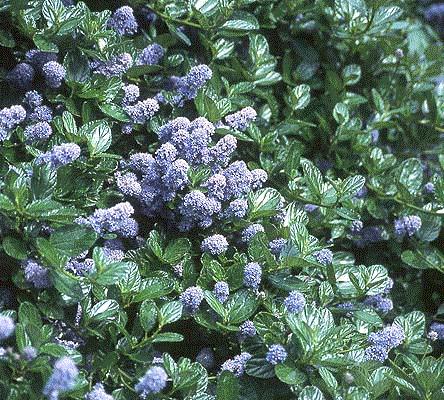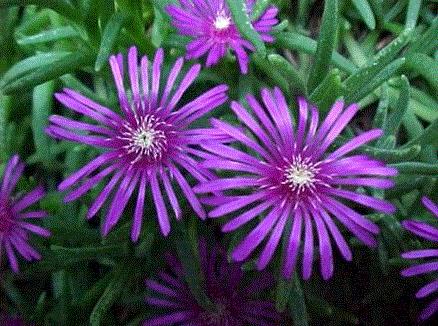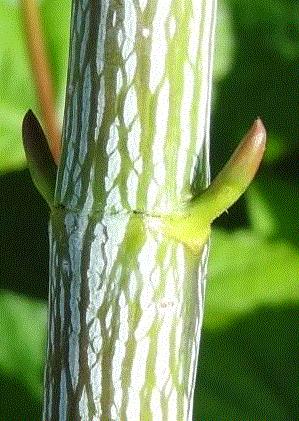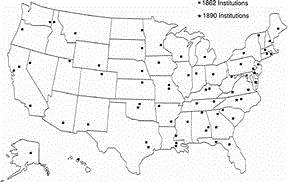ICE Raid at Corso's
Greetings from San Diego, California! Last Wednesday, my wife and I, along with our beautiful spawn, traveled to visit family here. As we departed the plane in San Diego, and traversed those waiting to board, I looked up at a TV to see the headline: “114 Illegals Detained at Ohio Garden Center.” My first thought was, as many of you probably shared, “Oh crap.” After all, there's been minimal attention paid to ornamental producers (by Immigration & Customs Enforcement; ICE) over the years. We’ve been lucky (if you can call it luck) that animal processing facilities and vegetable producers have borne the brunt of raids on agricultural businesses.
But as I travel the nation, I pay attention to workers, and especially the sheer number of workers employed at larger growers. Those workers may be spread out over 100 or more acres, as opposed to confined to a single chicken processing building, but a large landscape contractor or nursery still employs a lot of workers. So it was just a matter of time before a large raid happened in our industry, and based on this Administration’s tone regarding illegal workers in the U.S., it’s not going to stop anytime soon.
I suggest you double check the status of your workers. The burden is always on the employer, as are the criminal penalties, should ICE officers show up on your doorstep.

Possible Penalties
What would a first-time offender be looking at? To quote the ICE website directly, “Monetary penalties for knowingly hiring and continuing to employ violations range from $375 to $16,000 per violation (per employee), with repeat offenders receiving higher penalties. Penalties for substantive violations, which includes failing to produce a Form I-9, range from $110 to $1,100 per violation (per employee). In determining penalty amounts, ICE considers five factors: the size of the business, good faith effort to comply, seriousness of violation, whether the violation involved unauthorized workers, and history of previous violations.”
However, AmericanHort's Craig Regelbrugge told Chris Beytes last week, "I’ve seen a number of grower operations go through I-9 audits over the years. Those that have been diligent about I-9 compliance usually come through with few problems, though severe challenges can result keeping the operation running smoothly when 25% to even as high as 80% to 90% of production employees end up needing to be terminated. There are also choices to be made regarding community relations and reputation management."

Can You Protect Yourself?
The short answer is that every employer should take the time and spend the cash to sit down and chat with a labor lawyer. In these times, it’s as important as having a tax lawyer on speed dial, which you also should consider consulting during the process. There are a few things you need to discuss with the attorneys.
-
Limited Liability Corporation (LLC) is a must to separate business assets from personal assets, which isn't the case if you're a sole proprietor. There are many variations when it comes to incorporating and this is where that tax lawyer comes in handy. How would this afford protection? Well, it wouldn’t protect the business assets at all, but it would certainly protect your personal assets. I don’t think anyone wants to end up living in a van down by the river and having to work part time as a motivational speaker, so protecting personal assets should be your priority.
-
Contract workers. If you hire workers as 1099 contract employees, then the burden of proof for legal status falls upon the contract worker rather than the employer. There's a catch in that if you hire a 1099 worker that you know is illegal, you can still be found liable. Reminds me of the “don’t ask, don’t tell” days in the military.
-
Utilize a hiring agency who pays employees directly. There are a number of private hiring agencies who provide employees to businesses, whereby the business pays the hiring agency, who then pays the employees. In this case, the burden of proof for legal status of workers falls upon the hiring agency and not the business requesting employees. Again though, if there's proof that you know these employees are illegal workers, you can still be held liable.

Ceanothus—A Cali Native
Enough with the immigrant worker issues—let’s talk plants! Being that I'm in Cali—and I can’t resist being nosey around the landscapes of La Jolla, Balboa, and Hillcrest—I must give a shout out to one Southwest native species that I really enjoy and that seems to be surging. Ceanothus griseus var. horizontalis has been one of those on-again/off-again species that's gaining steam again as new cultivars emerge.
The Sunset series (among others) are pushing the surge and there are several new introductions available, including Highlights, Diamond Highlights and Cool Blue. Of those (that I've seen here in San Diego), I prefer Highlights, as it seems to have more contrast of deep green (with a lighter cream margin on variegated foliage) contrasted to the brown coloration of mulch or soil. It’s simply got the right amount of deep green to cream margins to draw attention.

Ceanothus =Yankee Point. Photo courtesy of Patrick Breen, Oregon State University.
Although all cultivars are rated as Zone 8 hardy, Yankee Point is an older, but reliable, most commonly found in the market. Yankee Point isn't variegated (like most newer cultivars), but has the typical medium to deep blue flower clusters that appear in late spring and persist through early summer. It really does well as a low-growing variety of the species (24-in. tall) that I've used in the same context that I would a liriope or pachysandra. You know—a tough evergreen. We could all use more of those!
Its one drawback is that, although listed as a Zone 8 plant, it’s rarely seen east of Texas, most likely the result of poor performance in high precipitation environments.

Ice (Ice) Plant
But I’m in San Diego now, so first I must give a shout out to Delosperma cooperi. You can actually thank a cold-tolerant horticulturist, Panayoti Kelaidis of Denver Botanic Garden, for popularizing this species (and genus actually) in the '90s. While native to Southern Africa (the continent, folks—not the State), it can be found growing just about everywhere in the southwest these days.
In my opinion, it should be used more across the remainder of the (southern tier of the) nation in Zone 7b south. It’s even well suited as a container plant or annual farther north. Yet somehow, it’s often absent in landscapes east of Texas and Arkansas. I don’t quite understand that.

Delosperma cooperi flowers.
I’m not going to get into cultivars here; there are a lot of hybrid delosperma that deserve praise, yet sometimes the species is enough to merit love for a plant. Plus, I know every one of you are capable of investigating what cultivar suits your needs. But if you're in need of a tough-as-nails species (once established), this is the genus for you! Drought? No worries. Too much rain? It actually seems to go dormant waiting for the next punch to be thrown.

Moosewood
I front loaded the serious stuff, so we had to have some fun on the back end with plant geekiness. Also, I had to attend to the needs of those in the north. Hence, a little love for moosewood (Acer pensylvanicum). First, I dig the common name moosewood, although its other common name (striped maple) seems to be more appropriate. I was introduced to this species while at Virginia Tech, as you won’t find it commonly grown south of Zone 7a (and that’s a stretch).

Moosewood twigs (and trunk while young) are striped until they reach several inches in diameter, at which point the bark begins to flake.
Its native range stretches from Wisconsin east to Quebec and the Maine Atlantic coast (including Zones 3 to 6) and then southward down the spine of the Appalachians into far northeastern Georgia above 2,000 ft. in elevation (Zone 7a). This range is representative of many northeast native species. However, although it’s found in the southeast, one shouldn’t think that it could be used outside of high elevation (as in mountains, folks) landscapes south of western Virginia.
What makes the species so unique? For me, it’s definitely a bark thing. How could one not like striped bark? In addition to a good fashion choice that makes the tree look taller than its typical 30 ft. max height, it's absolutely a conversation piece. Additionally, being a smaller statured tree, it's well suited for suburban landscapes of the Northeast, much like Trident maple is in the south and Midwest. Oh, and the fall color is solid, being a yellow to orange.
If there was a downside to the tree, it's that it doesn't respond well to alkaline soils, developing micronutrient deficiencies (and associated foliar issues). It’s also not a fan of dry soils, which can be somewhat remedied with heavy mulching and supplemental irrigation during dry periods. Despite these issues, I’m a fan and think this tree definitely deserves a spot in landscapes of the upper Midwest into the Northeast.

Is There a Pesticide Label/MSDS Database?
I meant to write a piece on this earlier in the year, before pests and diseases got going, but this is as good a time as any. I'm frequently asked if there's a chemical label database online that's regularly updated and where labels can be downloaded. The answer is yes, there's a comprehensive database and one that has been around since the mid-'80s, if my memory serves me correctly.
Greenbook.net is a free online resource devoted to not only providing chemical label and material safety data sheets (MSDS) for just about any agricultural chemical you can think of—it's also a good place to go when you have a bit to check up on pesticide-related news. Granted, the news feed is driven mostly by press releases from chemical companies, yet it's still a great resource.
 A screenshot of the greenbook.net homepage reveals how easy it is to search for a label. Yep, it's right there on the homepage waiting for you.
A screenshot of the greenbook.net homepage reveals how easy it is to search for a label. Yep, it's right there on the homepage waiting for you.
I hope this helps those of you who are investigating new chemistries, yet don't want to have to conduct a Google search for each pesticide and then sift through results. It really does save a tremendous amount of time.

Our Wacky Wonderful World—Notes from the Edge of Sanity
I would bet that most of you have heard the term "Land-Grant University System," no matter the country where you reside. Land-Grant Universities are unique to the U.S. (although similar models are found globally) and are mandated to include a focus on agriculture that includes teaching, applied research and outreach (Cooperative Extension) activities. Many of the techniques you use, cultivars you plant, chemicals you apply, etc. were either developed or tested (without bias) at one or more Land-Grant Universities. I like to think of the universities that make up this system as the quiet giant in agriculture, keeping innovation moving forward, agricultural businesses educated and providing a constant stream of trained employees.

Each dot represents a Land Grant Institution in the U.S. Note: Tribal Universities are not depicted in this image.
But the Land-Grant System is continually under attack, seen by many university administrators and elected representatives as outdated and stale compared to business schools, biotechnology departments and engineering schools. As a result, the support you receive from your Land-Grant System will continue to erode, unless professionals like yourself make your voice heard. A perfect example today is the low number of university-trained horticulture employees that are available for hire. We commonly hear that one reason is because kids these days don’t want to get into horticulture. Well, another is that horticulture departments are quickly disappearing across the nation, merged with plant pathology, entomology and agronomy to form “plant science” curriculums with watered down ornamental courses. Horticulture is losing its identity in higher education and no one seems to notice. That’s frightening.
This week’s example of the extinction of horticulture in higher education comes to us from Kansas State University, who decided to permanently close the John C. Pair Horticulture Center, a 120-acre research station devoted to horticulture, with a strong emphasis on ornamental horticulture. In addition to closing the station, the region will lose a valuable outreach presence for growers and landscape contractors in the Wichita, Kansas, to Oklahoma City, Oklahoma, corridor and Kansas State University will lose several faculty whose mandate was to support ornamental horticulture.
Why am I ranting about this now? Simple—we'll continue to lose university ornamental horticulture programs unless industry steps up and demands that cuts to Land-Grant Universities, and specifically Colleges of Agriculture, be minimized. Horticulture tends to be the first cut, based upon my observations nationally, because university administration doesn’t hear from our industry about the value of horticulture programs to the green industry’s continued success. So contact your state’s Land Grant University, ask for the Dean of the College of Agriculture and raise hell. Do the same with state elected representatives.
And the sooner, the better. Just because the economy is rolling along doesn't mean a horticulture program is safe.

Live authentic,

Matthew Chappell
Editor-at-Large
Nursery & Landscape Insider
This has been received by 30,019 of the hardest-working horticulturists in show business!
If you're interested in reaching 30,019 (and growing) clients who eagerly await every Nursery & Landscape Insider and surely read every word, contact Kim Brown ASAP and she'll hook you up. And thanks for helping us reach a community of 30,000+ fellow horticulturists! Keep spreading the word.